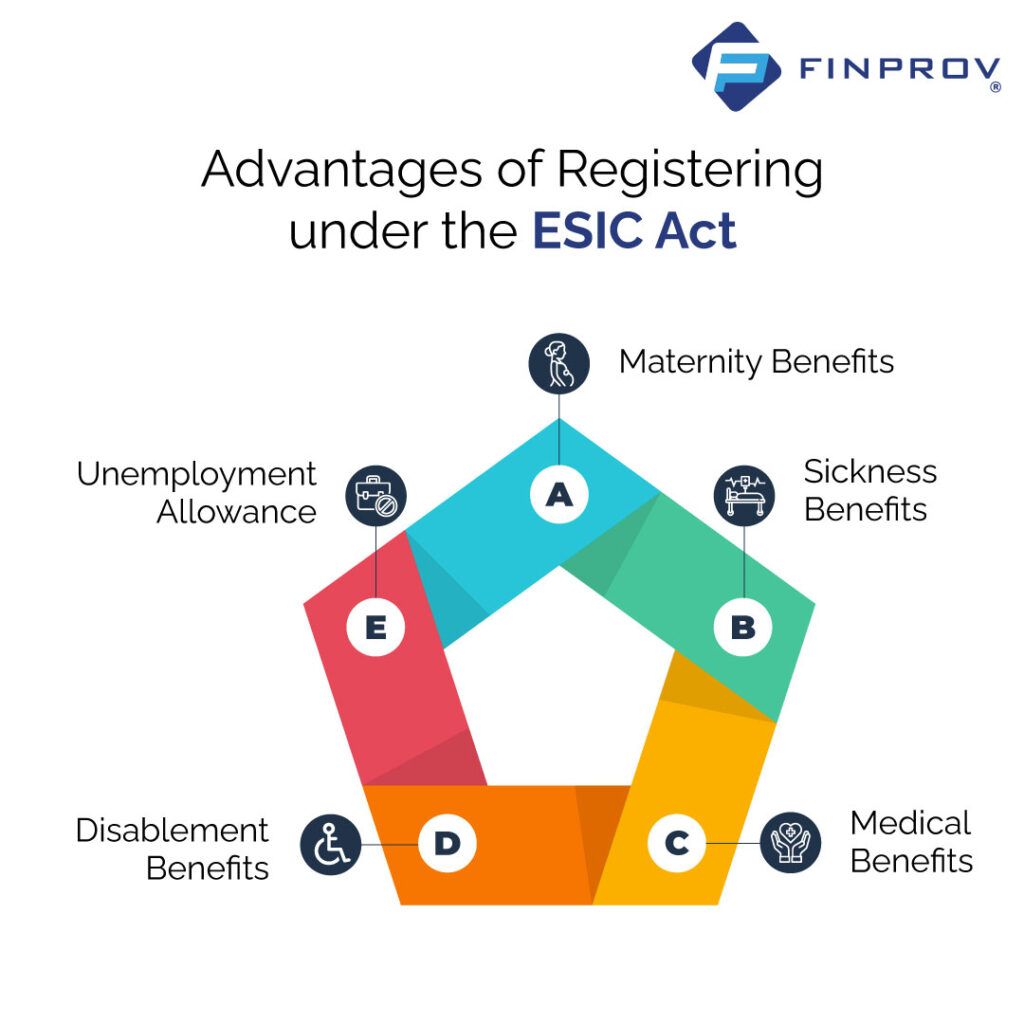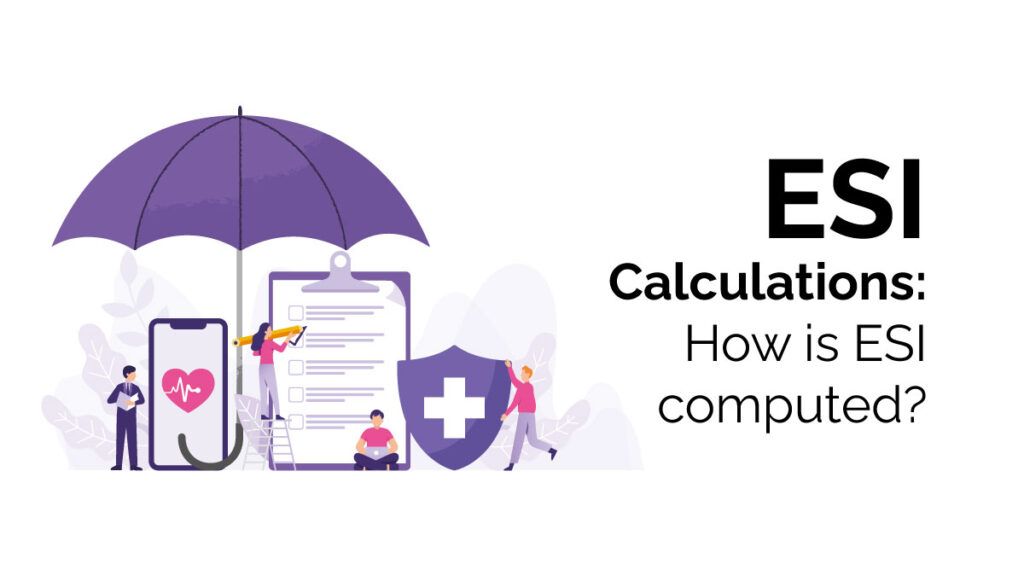Struggling to overcome sudden uncertainty, facing challenges; What do you think about the relevancy of the Employee State Insurance (ESI ) Scheme in such a circumstance? Is an ESI a significant aid for employees to secure their financial future? Familiarising yourself with ESI and ESI calculation will be your best companion during your financial struggles.
ESI is a scheme for employees and a contributory fund by the Employee State Insurance Corporation. The ESI funds have included both the contribution of employers and employees; the insurance or cash benefits will be delivered later for the respective employees. Furthermore, the ESI scheme comes under the ESI Act of 1948. Both employers and employees must have to acquaint themselves with the Employee State Insurance (ESI) Calculations.
What is ESI Act 1948?
The ESI insurance funds governed by the Employee State Insurance Corporation were developed in accordance with the ESI Act of 1948. As per the core of the Act, all firms or establishments with more than ten employees must follow ESI Act and maintain a transparent ESI fund system. Employee wage is the major criterion that defines the employer’s and employee’s ESI contributions. Moreover, the ESI act pins down that for employees with a salary range below rupees 21000 per month, the employee and the organisation must be covered under ESI.
Let’s look beyond the ESI Act in view of ESI calculation and funds; it can be explained in the light of the employee support system. The Act focuses on providing benefits to employees if there is any case of injuries, sickness, maternity, or employment injuries etc. for the employees.
More specifically, the employee entities under the ESI scheme system must have a salary of less than 21000, and for the employees having a disability, the range is less than 25000. As per the Act, the labourers contribute 0.75% of their salary, and the employers have to share 3.25% towards the ESI scheme. And employees who all earn daily average earnings of up to rupees 176 are excused from ESI.
For ESI registration, according to the Act, the document includes Address proof, Business PAN card, Details about shareholders, partners, directors, business licences, employee details and information regarding their salary structure, bank account details, memorandum of association, article association etc. are needed. Besides, there have been penalties for any delay in contributing to ESI non-payment and late payment, or false payment, with rupees 5000 being the penalty and two years of prison.
Wages are defined as per ESI Act.
In accordance with the employee wages, the ESI contribution is calculated. Also, the ESI must be calculated to define one’s eligibility and wages. Knowing the ESI calculation formula has a significant role in an employee’s life; that helps to gain knowledge or awareness about one’s future financial investment.
The application of the ESI formula follows certain inclusion and exclusion criteria. Several elements have to be considered in the ESI calculation. During the application of the ESI calculation formula in excel, the components such as Basic pay, Dearness Allowance, City Compensatory allowance, House rent allowance, sales commission, meal allowance, medical allowance, Special and overtime allowance, Newspaper and education allowance etc. At the same time, the constituents include an entertainment allowance, leave encashment, compensation for retrenchment, gratuity, health insurance premium, tax deductions, annual bonus, annual commission, petrol allowance etc.
To boot the concepts, there must mention the supreme court verdict regarding the ESI Wages in 2021. SC has remarked that there is no role in ESI wages for conveyance allowance and travel allowance.
ESI calculations and Formula
The ESI Act of 1948 points out that there is a fixed percentage of contribution on both employee and employers’ sides in the ESI funds. Employers are at 3.25%, and employees it is 0.75%.
The ESI calculation is based on the total monthly earnings (excludes the employer contribution of PF /ESI, If it was included in the employee’s CTC). The calculation of wages is nothing but adding the basic pay and the allowance (DA+ HRA+ Medical+ etc.).
For instance,
Mr X is an employee at firm Y; As per the ESI Act, 1948, X’s salary is 20,000 rupees. Then by applying the ESI calculation formula in this context,
Then the results will be,
Employer contribution (3.25%) =20000*3.25/100
The amount will be 650.
Employee’s Contribution (@0.75%)= 20,000*0.75/100
The amount will be 150.
In total, sum up the employer, and employee contribution will be the total ESI contribution for Mr X, and it is 800 rupees.
It is the employer’s responsibility to deposit the total contribution of rupees 800 for Mr X by deducting the contribution of X and Y from Mr X’s wages.
Over and above that, the employers have to pay the contribution every month along with deducting the employee’s contribution to the ESI funds as well. Both contributions must be deposited within the last 15 days of the month.
SBI, Allahabad Bank, Andra Bank, Dena Bank, Canara Bank, HDFC Bank, ICICI Bank, Indian Bank, Yes Bank, and Punjab National Bank, like around 58 banks, are authorised by the Employees State Insurance Corporation of India to collect the ESI insurance funds.
Contribution and Benefits period of ESI.
ESI schemes are classified into two different periods; that is, it divides the calendar into two different contribution periods of six months. For more in detail, the contribution period is in the first six months; then the coming next six months of the period is the benefit period. The following year, the benefits will be produced according to the contribution period.
For instance:
The filing of ESI also depends on the contribution period. If the contribution period is from 1st April to 30th September, the benefits period will be from 1st January to 30th June. If the contribution period was from 1st October to 31st March, the benefits period would be from 1st July to 31st December. The deadline for filing the ESI is the period for the first contribution period (1st April to 30th September), which is 12th November, and for the period of 1st October to 31st March, which is 12th May.
Advantages of Registering under the ESIC Act.
The scheme has, unless otherwise, aspects of social security which ensure the employee’s financial security and have a significant role in the stage of the employee emergency period; for example, if there is any kind of medical emergency, disablement, death etc., happens, and ESI act as the security system.
In detail;
Maternity Benefits: for expectant mothers, there have been appreciable beneficial offers provided by ESIC. 100% of wages will be provided for a mother for 26 weeks of labour period, and also, in case of miscarriages, six weeks of completed wages should be provided. Moreover, as in the case of baby adoption, the wages are offered for 12 weeks.
Sickness Benefits: In medical leave, 70% of the wages must be paid to employees, which is a maximum of 91 in a year.
Unemployment Allowance: there is a maximum of 24 months cash allowance for employees in the light of involuntary non-employment or permanent invalidity due to non-employment injury.
Medical benefits: the scheme not only provides medical support for employees, but it provides medical coverage for employees as well. The medical benefits of ESI funds take the medical expenses or hospital bills.
Disablement Benefits: the benefits are provided for an employee who is permanently or temporarily disabled on the job. In such cases, employees get their salary from the ESIC scheme. If the employees are under a temporary disablement, then employees can get the salary every month till the end of that disablement. In the case of permanent disablement, employees will get the benefits for a lifetime.

Additionally, through the ESI scheme, another beneficial offer for employee’s dependents. If the employee dies at the workplace, their dependents get the benefits such as confinement and funeral expenses, vocational training, physical rehabilitation, and Skill training under Rajiv Gandhi Shramik Kalyan Yojana(RGSKY).
One should be aware of ESI, provident funds, GST, and Income Tax, like several financial prospects. Finprov’s short-term and job-oriented courses offer valuable learning resources from this point of view. We introduce highly reliable practical orients courses that help the aspirants to get a clear knowledge of financial prospects, including the basic sense. With expert guidance, Finprov shares an appreciable learning opportunity which includes handling Tally Prime, Zoho Books, and MS Excel, like accounting softwares. It must have been mentioned that not only for career building but for your day-to-day life, financial concepts have a considerable role. Thus, take advantage of the chance to learn.






